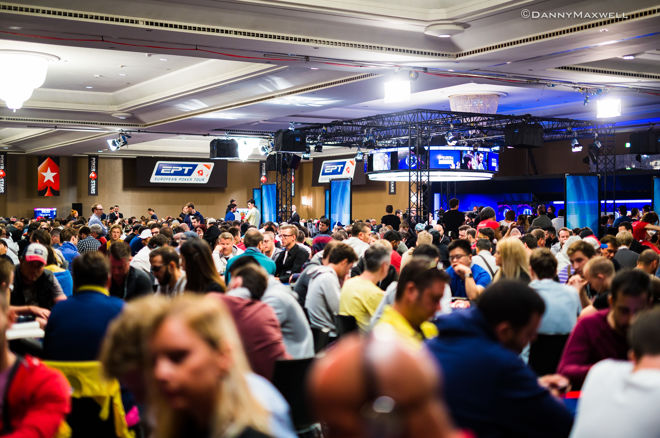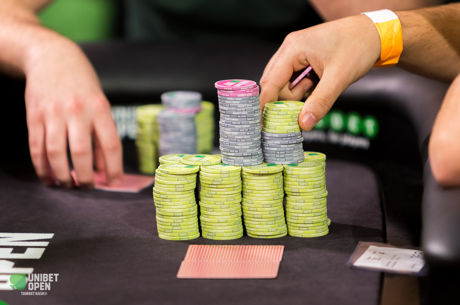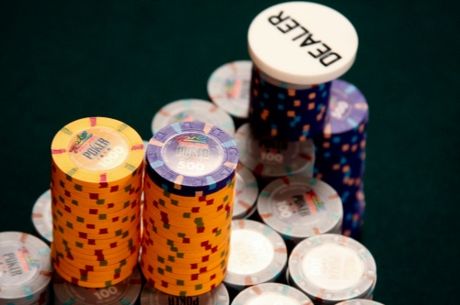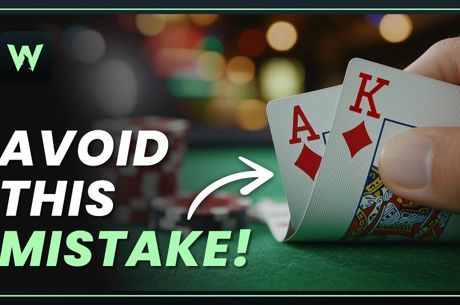10 Multi-Table Tournament Tips: Middle Stage Strategy

Moving on from the early levels into the middle stage of multi-table tournaments, let's focus on some factors you need to keep in mind in order to increase your chances of making it even further and into the money.
By "middle stage" we're referring to the period following the early levels — that is, after the antes have kicked in and after late registration has ended, but before you're in close enough proximity to the bubble for the prospect of making the money to exert any significant pressure just yet.
How you approach the middle stage of a multi-table tournament has a lot to do with how well you've managed to do during the early levels, which is usually affected by how you've been approaching the tournament thus far when balancing the need for chip accumulation and survival.
If you've been focusing on accumulating chips by being aggressive and occasionally taking risks in the hopes of building up a stack, you're likely either sitting above the average — perhaps even well above the average and among the leaders — or you might be especially short-stacked if those chances you've taken haven't worked out in your favor.
Meanwhile if your focus has been more about survival — that is, if you've been playing a mostly tight game and most avoiding risks thus far — you're probably right around the average or perhaps a little above or below it.
When discussing middle stage strategy, then, your approach will differ according to how your stack compares to those of your opponents, as well as how your stack looks in terms of its relative depth when compared to the blinds and antes.
Middle Stage Strategy: Big Stacks
If you've successfully chipped up during the tournament's early stages to a point where you have a significant advantage over others at your table — say you're the table's chip leader or among the top two — the middle stage becomes a period when you should use those chips to your advantage, in particular by pressuring those with medium stacks fearful of losing too many chips prior to the approaching bubble.
With a big stack (or a medium stack) you should be going for blind steals when tighter players are in the blinds, as this is a point in the tournament where the blinds and antes are big enough to be worth stealing. A simple 2x raise at a full-ring table only has to work half of the time to enable you to add chips to your stack, given the additional antes.
By the same token, big stacks can defend their blinds with a wider range, either by calling or (more often than not) reraising. Big stacks can also get away with calling others raises more often, looking for opportunities to trap those who are only raising with the using upper range of starting hands.
Big stacks can also absorb coin flips or "priced in" all-ins versus the short stacks, although don't become overly eager to gamble just because you can afford to lose chips. The fact of the matter is, having chips means you don't have to gamble the way you do when short. Maintaining your above average stack as the tournament is approaching the bubble is worthwhile, as you can then open up and take advantage of bubble opportunities to build when the medium and short stacks really tighten up.
Middle Stack Strategy: Medium Stacks
Having a medium stack during the middle stage of a multi-table tournament can be challenging — even awkward — at times, as you have enough chips to keep "playing poker" (with blind steals and resteals, preflop three-bets, continuation bets, and other postflop manuevers) but you are at risk of becoming short-stacked or being eliminated whenever vying for pots against larger-stacked opponents.
Like the big stacks you should be targeting tight players when they're in the blinds. Defending your blinds is important as well. As the middle stage begins and blind steals begin occurring more frequently, it can be worthwhile to three-bet in response the first time someone tries a late position blind steal against you, if only to establish for everyone else that you aren't going to be an easy target going forward.
Exercise caution in postflop situations with decent though not especially strong hands such as one-pair hands (including top pair, top kicker) and second-pair hands. The big stacks in particular — if they're following the advice given above and looking to trap medium stacks — can present a serioius danger should they play aggressively against you in postflop situations where you've made your pair but they may have better. (See "Risky Business: Medium-Stacked in a Tournament's Middle Stage" for more discussion of this scenario.)
Meanwhile don't be afraid to value bet stronger hands (two-pair or better). Slow playing after flopping well generally isn't going to be a good idea except against the loosest opponents who'll tend to bet the hand for you. This can be an especially beneficial spot against bigger-stacked opponents who are on the passive side, willing to call your bets down because they have the chips to spare.
You should always be aware of others' stack sizes at any point in a tournament, but when medium-stacked during the middle stages may be the most important time to be so aware. Don't get caught battling for a pot preflop or postflop with a subpar holding versus either a bigger stack or a shorter stack who can do serious damage to your stack should the pot get especially big. It's a common mistake among MTT players to risk unnecessarily large percentage of their chips during the middle stage — say by calling a shorter-stack's all-in with a small pair, ace-queen or worse, or king-queen, or taking a similar gamble after flopping a flush or straight draw.
Middle Stack Strategy: Short Stacks
Let's make it clear — just because you might be below the average in a tournament, that doesn't necessarily mean you're "short-stacked" or in the danger zone, chip-wise. Sometimes when playing online poker players become overly concerned about where they are in relation to an average stack (always displayed in the tournament lobby). Don't panic, even if you happen to be among the shortest stacks at your table in the middle stage of a tournament, especially if you still have 15 big blinds or more.
Slip down to 10 big blinds or less, however, and you'll need to be looking for those spots to double-up prior to the tournament reaching the pre-bubble stage. You don't have the chips simply to keep folding hand after hand, orbit after orbit. With medium-to-big pocket pairs and big aces, getting your stack in before the flop should be a priority, while sometimes you can open-push with less (e.g, big kings, lesser aces) such as when folded to in late position or the small blind.
Unless severely short (five BBs or less), be less inclined to reraise-shove with anything less than premium starting hands. With Ax6x or KxJx, for instance, you wouldn't necessarily want to go to showdown against a player who has opened the pot if you could avoid it — if they call your reraise-push, they may well have you dominated.
It's possible sometimes as well to chip up with a short stack during the middle stage of a tournament without necessarily putting your entire stack in the middle, especially if there are tight players with medium stacks. You can get such players to fold to standard opening raises even if doing so leaves you only a short 6-8 BB stack behind. Knowing if they call they may well be "priced in" to play for your entire stack, these players often will not wish to get involved.
Finally, don't forget the "stop-and-go" play as an alternative to open-shoving a short stack.
Conclusion
Tournament poker rules don't change from level to level, but your strategy should as you move through the different stages of a tournament.
Keep in mind that the middle stages of multi-table tournaments are where differing stack sizes begin to matter greatly. Pay attention to who's got the big stacks, who's short, and who's in between, and also always be aware of where your stack places you as you negotiate your way deeper in an MTT.
Also in this series...
- Fast vs. Slow Structures
- The Importance of Stack Sizes
- Chip Accumulation vs. Survival
- How to Play the Early Levels
- Approaching the Bubble
- Strategy on the Bubble
- In the Money
- Going for the Win
- Bankroll Management for Poker MTTs
Ready to take a seat at the table? Put these multi-table tournament tips into practice at partypoker.
In this Series
- 1 10 Multi-Table Tournament Tips: Fast vs. Slow Structures
- 2 10 Multi-Table Tournament Tips: The Importance of Stack Sizes
- 3 10 Multi-Table Tournament Tips: Chip Accumulation vs. Survival
- 4 10 Multi-Table Tournament Tips: How to Play the Early Levels
- 5 10 Multi-Table Tournament Tips: Middle Stage Strategy
- 6 10 Multi-Table Tournament Tips: Approaching the Bubble
- 7 10 Multi-Table Tournament Tips: Strategy on the Bubble
- 8 10 Multi-Table Tournament Tips: In the Money
- 9 10 Multi-Table Tournament Tips: Going for the Win
- 10 10 Multi-Table Tournament Tips: Bankroll Management









